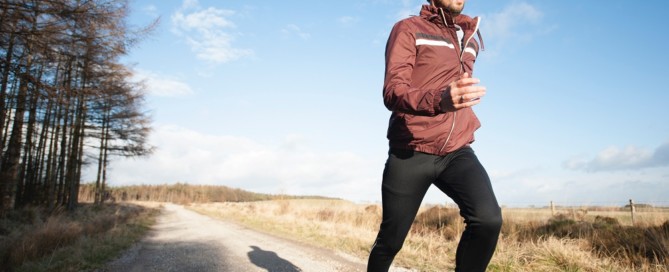Most days, you’ll throw on some tech tops and shorts, lace up the kicks, and start running. Whether you’re trying to run five miles at half marathon pace or just run off a tough day at the office, you’re usually not worried about all the little details of your form. But, what if we slow it down a bit and really look at your stride? Once we start digging deep into how one foot follows the other, there’s a lot more we can look at and learn from to better understand how to run smarter and faster.
One of the first things to think about is stride length. While measurable length will vary from person to person, we can look at foot strike to get a sense of what an individual runner’s form looks like and how to interpret their stride length. So, what exactly is your foot strike telling you? Depends on which of three kinds of foot strikes you’re using!
Let’s talk about heel striking first. Most people do it, and a lot of shoe companies expect you to do it. That’s why more traditional running shoes have thick heels and even beveled heels on the lateral side. Runners will generally strike first on the outside of the heel, then roll inwards (also called pronation) before pushing off from the middle to inside of the forefoot. Heel striking can often be attributed to overstriding, with your foot landing quite a bit ahead of your center of gravity.
Midfoot striking lands you right around the arch of the foot. In this case, your foot is landing more evenly, as opposed to the sharper angle of a heel strike. When midfoot striking, your stride length is shorter and you’re landing closer to under your center of gravity. If you forefoot strike, you land on the ball of your foot and have even shorter strides.
People often ask me what the best way to run is, and my response is and always will be that the best way to run is whatever feels most natural to you. What works for me or for championship marathoners won’t necessarily be what works for you. Most of your running progress will come from putting in the time and hard work, not changing your form.
But, if we dig into the finer points of technique and efficiency, forefoot and midfoot striking are more favorable. When you heel strike, you overextend and create a braking force. That forces you to expend more energy and time to roll through the entire length of the foot when progressing from foot strike to toe off, decreasing efficiency (it’s why ground contact time is an advanced metric that has attracted a lot of attention). Heel striking also causes more impact on the body, as that braking force will send extra shock up your legs and knees.
When you forefoot and midfoot strike, you don’t experience nearly as much of a braking force and are able to transition more quickly into toe off. To get a sense of what’s going on here, think about the impact your body and legs take as you tip-toe. Those shorter strides are not only easier on the legs, but they make you spend less time on the ground. Forefoot and midfoot striking are similar concepts.
So, yes, when you look at many of the top elites in the world, most of them are striking on their forefoot and midfoot. But, they’ve prepared their bodies and muscles to do so during years and years of training. There are also plenty of crazy fast people that strike on their heel. While technically the former is more efficient and has the potential to make you faster, the fastest you’ll be is what comes most naturally to you.
When thinking about foot strike, keep in mind that the goal of this article is not necessarily to get you to change your running form. Any change to your form will activate different muscles in the body, and if you change too much too fast, you can end up with an overuse injury. If you do choose to go about changing your form, do it carefully!


